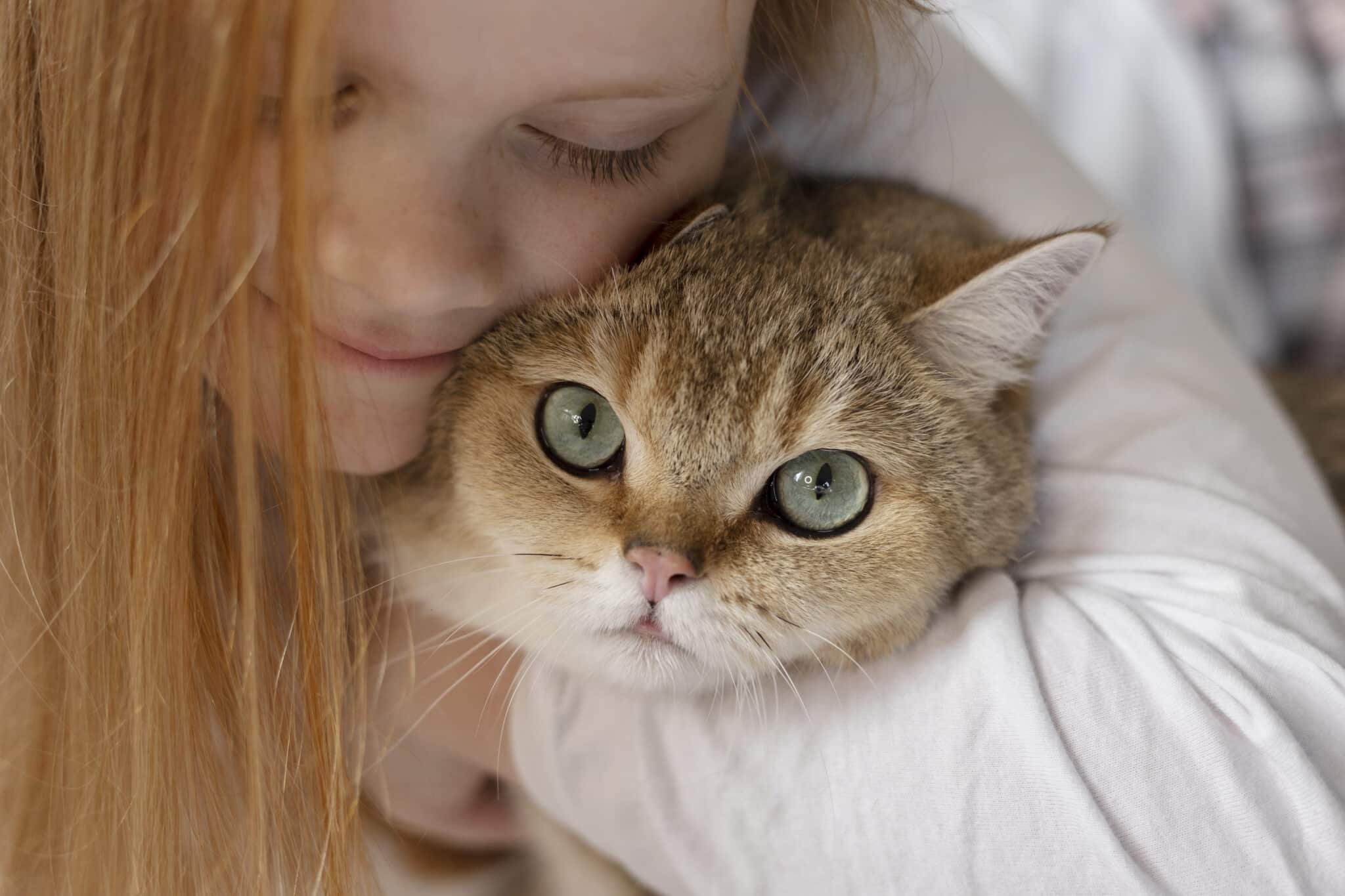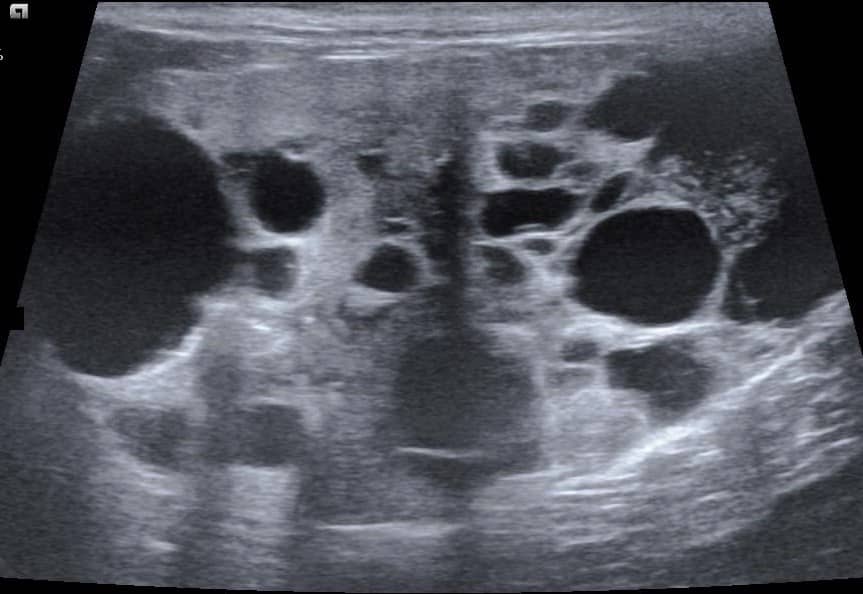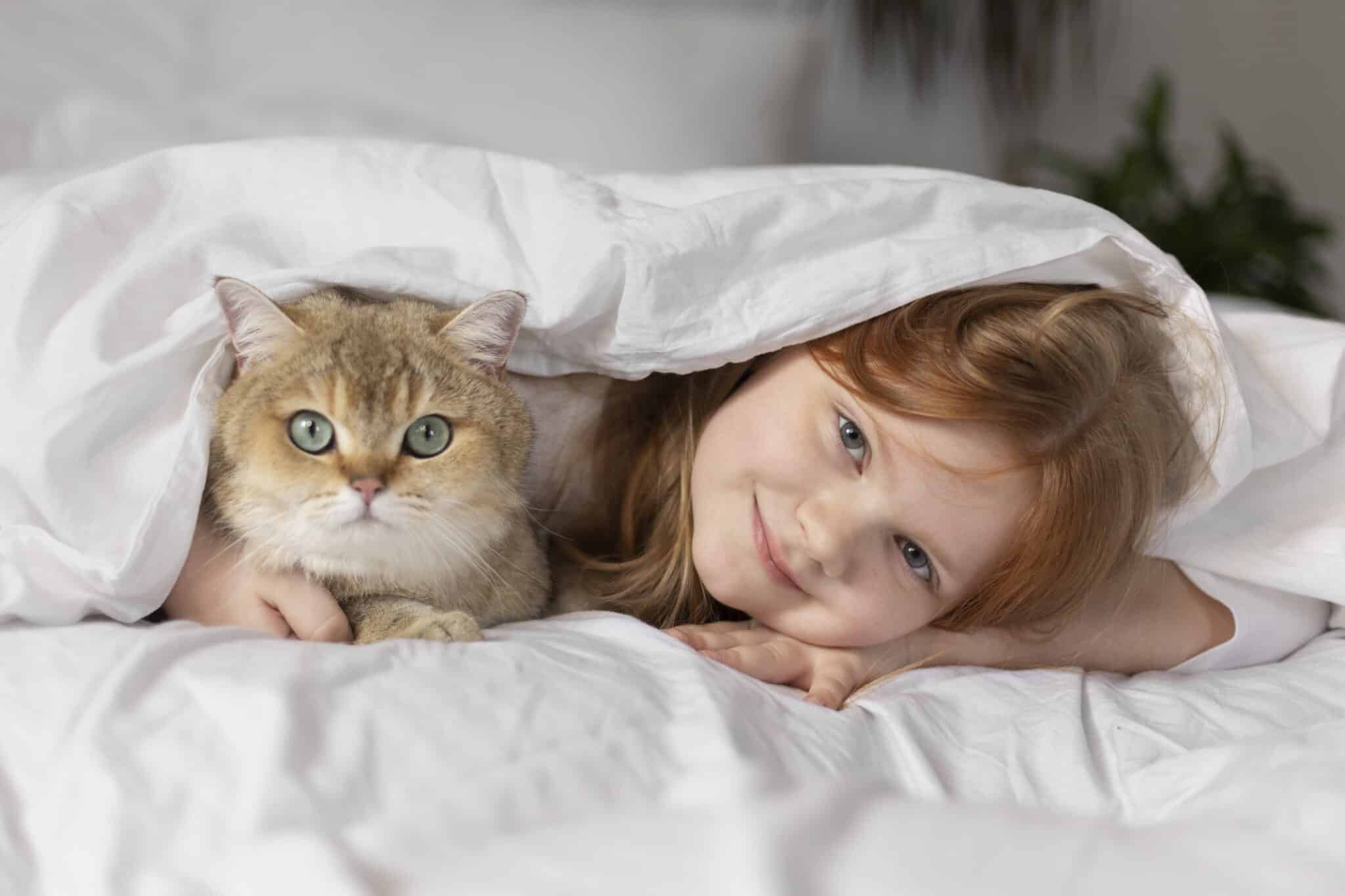
If you are a cat lover then no doubt you love the British short hair. Their chubby cheeks, plush coats, and big eyes can make you fall in love with them. These cats also have a friendly personality that even makes them the apple of the eye. If you look at the health of these cats generally they are healthy and live long lives. However, like other cats British short hair have health issues that can sometimes be deadly to them. In this blog, we will discuss British short hair health issues and tell you how you can keep your furry friend happy and healthy.
Six Genetic and Viral Conditions Affecting British Shorthair
Polycystic Kidney Disease (PKD)
PKD in cats was first of all found in Persian cats but this disease is also common in British short hairs. It is a genetic condition that leads the kidneys to fail over time and ultimately results in the formation of multiple cysts inside them.
PKD in British short hair begins at an early age and often the affected kittens are born with cysts in the liver and kidneys. As time goes on these cysts increase in size and cause complete kidney failure.
The PKD grows slowly and most signs start appearing when the cat is around 7 years old. This disease is incurable but you can manage some signs and symptoms can be managed to slow the organ failure.
However, there are some supportive inventions that you can do like urine testing, annual blood testing, regular ultrasound, and special diet in order to the cysts in check. As you know it is a genetic disease so always make sure to get your kitten from a responsible breeder as they regularly test their cats for this disease and make sure that it doesn’t pass on. Always make sure that your breeder is doing these tests.

Hypertrophic Cardiomyopathy (HCM)
It is a common heart problem that affects the British short hair and some other cats. In this disease, the heart muscle continues to get them and it eventually makes it hard for the heart to pump to the whole body.
The cats suffering from this problem show symptoms like lethargy, difficulty breathing, loss of appetite, irregular heartbeats, and coughing. Veterinarians can diagnose HCM in cats by doing a heart scan or with the help of an echocardiogram and also recommend blood tests and X-rays.
HCM is an incurable disease but it can this problem can be managed to increase life expectancy. The most important thing is to catch this problem in the early stage and then your vet will make a treatment plan that will improve the quality of your cat’s life.

Progressive Retinal Atrophy (PRA)
Atrophy is defined as the complete or partial deterioration of a part of the body. PRA in cats is a degenerative disease that targets the photoreceptor cells. As this disease continues the eye cells get damaged resulting in blindness in cats
PRA is common in Persian and British shorthair cats, it can be inherited and usually appears when the kittens are two to three months old. However, the adult cats also get this problem between the age of 2-3.
All those cats affected by PRA should be immediately removed from the breeding programs. As PRA has a recessive inheritance pattern so even if your kitty is not showing any sign still it can transfer this problem to the next generation. Affected cats usually suffer from night blindness and don’t like going in dark rooms, their pupils get dilated and eventually, cats get completely blind. There is no treatment for this disease but secondary problems developing with this condition can be treated and it can make your cat’s life better.

Autoimmune Lymphoproliferative Syndrome (ALPS)
ALPS in British Shorthair is a lymphoproliferative, nonneoplastic disease that is known for the abnormal amount of immune cells in the spleen and lymph nodes, and that made the tissues very large in size. The disease appears at the early age when kittens are 6-8 months old and continue for two to three weeks until they start showing symptoms like anemia, abdominal distension, weight loss, and lethargy. The prognosis of ALPS is very poor usually the kittens are euthanised after 4 weeks of the disease onset.
In breeding programs, you can use cats suffering from ALPS to protect breeding lines. However, you have to make sure that this will only work if you are breeding the affected cat with a normal cat as a result there will be no affected kitten produced. It is important to do the genetic testing of the litter in order to identify any kitten suffering from this problem.
Feline Immunodeficiency Virus (FIV)
FIV is just like HIV Aids in humans, it only attacks cats that have weaker immune systems, and just like aids, there is no cure for it. There are different strains of FIV and some are more deadly than others. If your cat got diagnosed with FIV it means that your cat got the virus but maybe it will take years to show the signs of disease.
FIV in cats is transmitted through saliva and it is transmitted if an affected cat’s shedding virus bites another cat. The virus can also be transmitted through a wound, a blood transfusion, or through sexual contact. However, humans are safe from this virus and they can get it because both of these are different strains and it can’t be transmitted to humans.
Cats that have this condition can live a long life of up to 5 years and sometimes even don’t show any symptoms however if they start showing symptoms and the condition gets worse then you have to euthanize your cat. You can keep your cat healthy by monitoring their health and by doing blood and urine tests at least twice a year in order to monitor their immune status.

Feline Leukemia Virus (FeLV)
FeLV is one of the common problems in British shorthair cats. Cats suffering from this leukemia (white blood cell cancer) can also suffer from other problems as well. The most common disease that is associated with Felv is lymphosarcoma or lymphoma and these tumors can be present in one or multiple sites.
In some cases, cats usually suffer from suppression of the immune system and it can range from moderate to severe. If your cat is suffering from immunosuppression it means she can suffer from a wide range of problems that otherwise won’t affect any healthy cat.
The most common signs that appear in FeLV-infected cats the anemia, Severe enteritis, abortion, eye problems, and neurological issues. FeLV in cats is fatal and 90% of cats usually don’t survive and die after two to four years of onset of disease. The virus can be transmitted through the saliva of the cats but it’s not considered highly contagious as the healthy cats have to stay with FeLV cats for a long time to get this infection.
There is no treatment for this disease and the affected cats either die or require humane euthanasia. FeLV can also be transmitted through breeding and the litter can suffer from this problem. When getting a British shorthair cat from a breeder always ask for a FeLV vaccination certificate to make sure that the kittens are healthy.

How to get the Healthy Cats?
If you are going to get a British shorthair cat make sure you select a reputable breeder who has done all the vaccinations and don’t hesitate to show the health certificates. Usually, good breeders like Golden Charm Cattery Toronto make sure that their breeding stocks get vaccinated and don’t suffer from any health problems. Once you get the kittens make sure that you consult with your vet regularly and do proper vaccination and blood testing to make sure that your kittens stay healthy and happy in the long run.

Table of Contents
- 1 Six Genetic and Viral Conditions Affecting British Shorthair
- 2 Polycystic Kidney Disease (PKD)
- 3
- 4 Hypertrophic Cardiomyopathy (HCM)
- 5 Progressive Retinal Atrophy (PRA)
- 6 Autoimmune Lymphoproliferative Syndrome (ALPS)
- 7 Feline Immunodeficiency Virus (FIV)
- 8
- 9 Feline Leukemia Virus (FeLV)
- 10
- 11 How to get the Healthy Cats?
